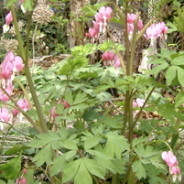Green Apple Soap: An Image of Healing Conversation from White Oleander
White Oleander, the novel by Janet Fitch, is a lovely and often heartbreaking story of a girl, Astrid, in search of a mother. Perhaps you’ve read it. (Or seen the movie—Michelle Pfeiffer plays Astrid’s birth mother, Ingrid.) The first thirty-eight pages of the book depict scenes of Astrid with her mother—a poet, extremely gifted, very beautiful, and also exceptionally self-absorbed—a woman who requires her daughter to serve as a kind of audience for her own life. Eventually, Astrid becomes a reluctant and then bewildered audience as her mother plots the murder of an ex-lover, carries out the murder, and then is sent away to prison. This leaves thirteen-year-old Astrid an orphan, a child whose name becomes, in her own words, Nobody’s Daughter. The remainder of the novel is a story of Astrid’s odyssey through the foster care system, her quest to become Somebody’s Daughter. In Astrid’s fourth foster home she finds herself under the care of a woman by the name of Claire. This woman, Claire, is the first foster parent to actually see Astrid as a person separate from herself. She is, at the same time, the first mother who helps Astrid begin to see herself. There’s one particular conversation, very simple, and especially poignant in that it’s the first conversation of its kind that Astrid has ever experienced. Claire asks Astrid if she likes coconut soap or green apple. Astrid finds the question baffling—– She wanted to know all about me, what I was like, who I was. I worried, there really wasn’t much to tell. I had no preferences. I ate anything, wore anything, sat where you told me, slept where you said. I was infinitely adaptable. Astrid goes on to tell Claire that she doesn’t know if she prefers coconut soap or green apple but Claire will not allow equivocation. She presses her to decide. So I became a user of green apple soap, of chamomile shampoo. I preferred to have the window open when I slept. I liked my meat rare. I had a favorite color, ultramarine blue, a favorite number,...
read more
